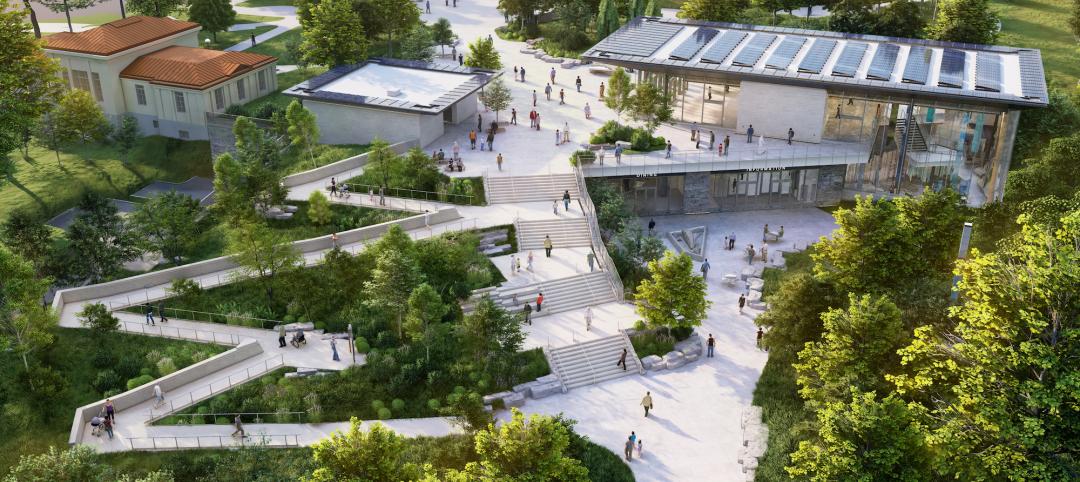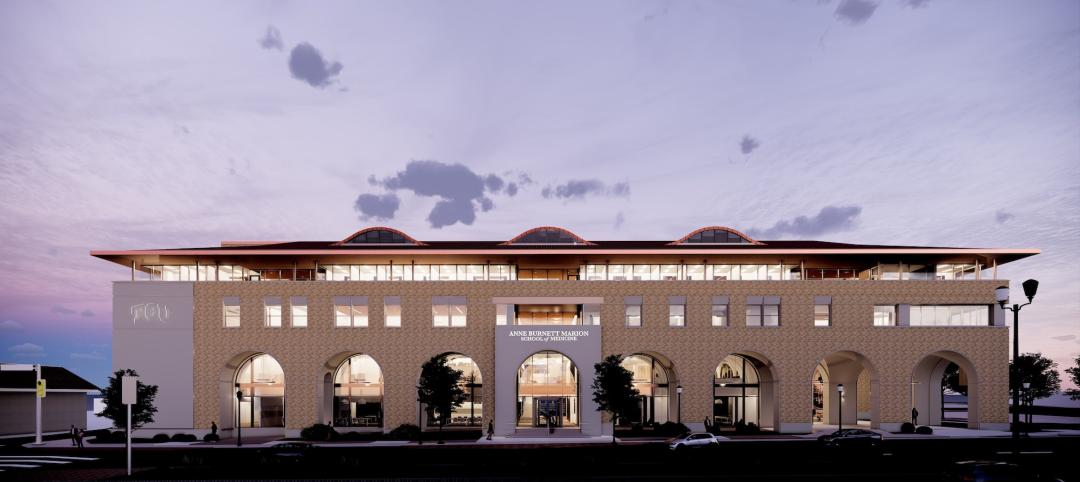Will online learning become a staple for America’s colleges and universities, even after the coronavirus subsides? And if it does, what will that mean for existing and future buildings on campuses across the country?
These have become a fundamental—even existential—questions that AEC firms say their higher ed clients are pondering. While online learning isn’t expected to replace classroom learning over the long run, some firms already see a movement brewing that favors a hybrid model offering collegians both options.
“Colleges and universities are taking immediate steps to de-densify classrooms and residence halls, forcing many institutions to adopt a hybrid pedagogical model whereby approximately one-third of students will receive in-person instruction concurrent with online instruction,” says Patrick McCafferty, Principal and Education Business Leader at Arup’s Boston office. Arup is already sensing diminishing demand for large lecture halls. (McCafferty wonders, though, if a hybrid model might inadvertently create a tiered student experience.)
Chris Purdy, AIA, LEED AP, Vice President and Higher Education Practice Director for SmithGroup, anticipates a “widespread acceptance” of the hybrid learning format. He adds that campus de-densification will require rapid, data-driven strategic planning. Erin Joseph Machau, Jacobs’ Higher Education Market Leader, sees these trends inevitably leading toward more modular and flexible design.
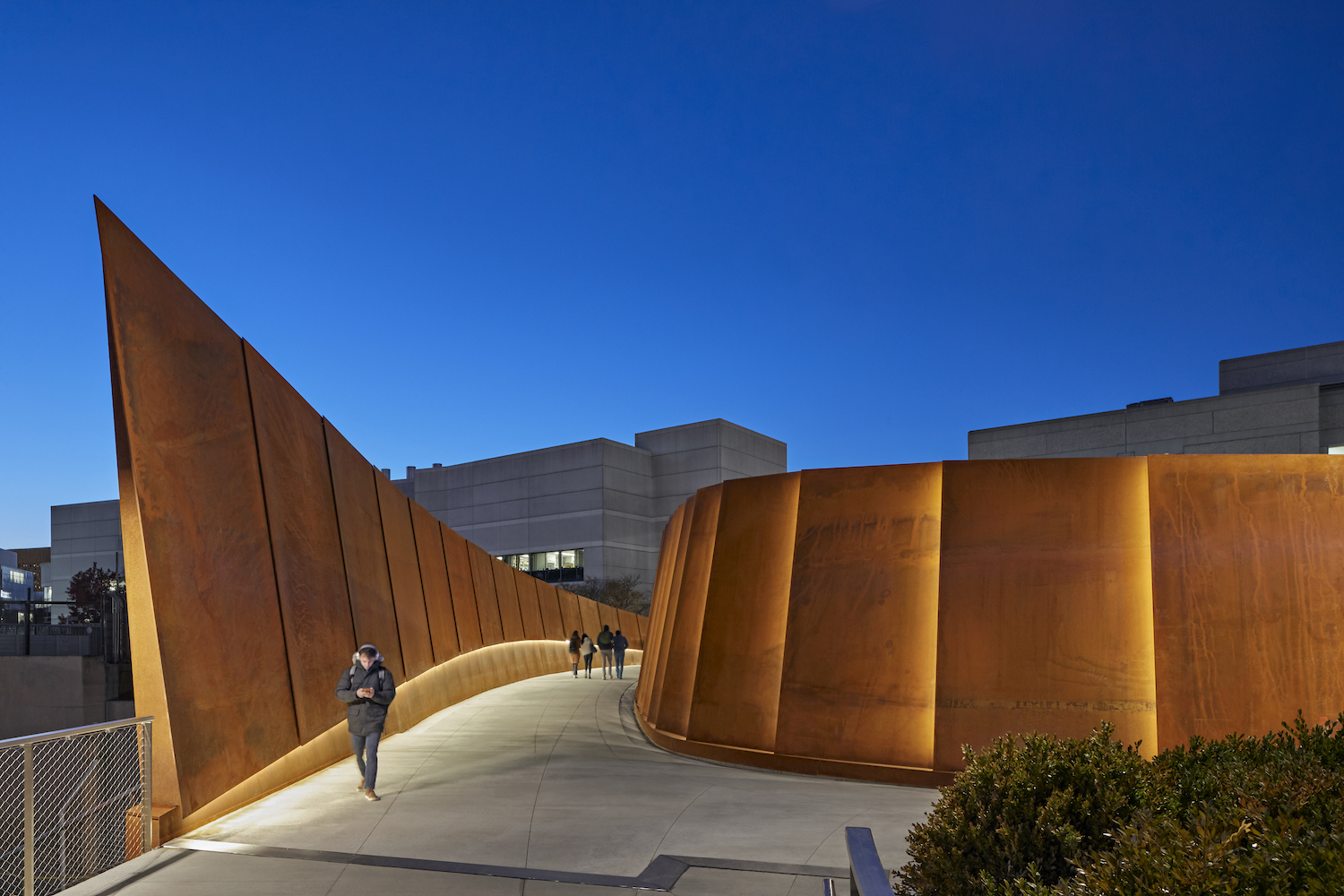
Northeastern University Interdisciplinary Science and Engineering complex. Photo: Tanguy Marquis
“Higher Education will rebound, but the type of projects needed will change,” predicts Machau. “Campus and departmental master planning, facility condition assessments, building and space inventory, and other consulting services will likely increase in need,” as universities lick their wounds from revenue losses, and reboot their space needs in light of what the “campus experience” and “student living” actually mean these days.
“COVID-19 has opened the door for campuses to make big changes for themselves and for their students,” says Tracy De Leuw, DPR Construction’s Higher Ed Core Market Leader. He, too, thinks more schools will focus on hybrid solutions that include combining multiple disciplines—such as business and finance with computer engineering and science—into mini think tanks.
Hybrid learning—such as the HyFlex course design model that gives students the option of attending classes online or physically—depends on technology. Schools are already leveraging technology to offset the impact of social distancing, says Damon Sheppard, HOK’s Regional Leader of Science + Technology. The shift toward learning from home could also spur greater demand for data centers and infrastructure investments, suggests Paul Erb, Executive Vice President for McCarthy Building Companies.
P3s could shore up shortfalls in the university sector
The embrace of hybrid learning, be it tentative or gung-ho, comes at a time when universities are staring at some stark economic realities. The higher education sector is girding for at least a 10% revenue reduction this year as a result of the coronavirus. The suspension of classes and the evacuation of student housing were major hits to many schools’ revenue streams. And going forward, will schools be able to justify what they charge for tuition if courses are delivered online?
The virus “created an unsustainable business model and operating budget gaps,” says Sean Edwards, Suffolk Construction’s COO for Higher Education. That led to pauses in new construction of many capital projects, and slowdowns in the planning and design of projects that weren’t already underway. Erb of McCarthy elaborates that while most of his firm’s higher ed projects already in design are moving forward, future projects have been “pushed out” farther.
Even PCL Construction, which as of mid-June had 23 higher ed projects under construction, expects universities to experience revenue losses from social distancing requirements and the downsizing of dorms, which could force more students into off-campus housing, says Bob Hopfenberg, the firm’s Vice President of National Business Development. PCL predicts more separation within classrooms, and modifications to dorms and residence halls that reduce student occupancies.
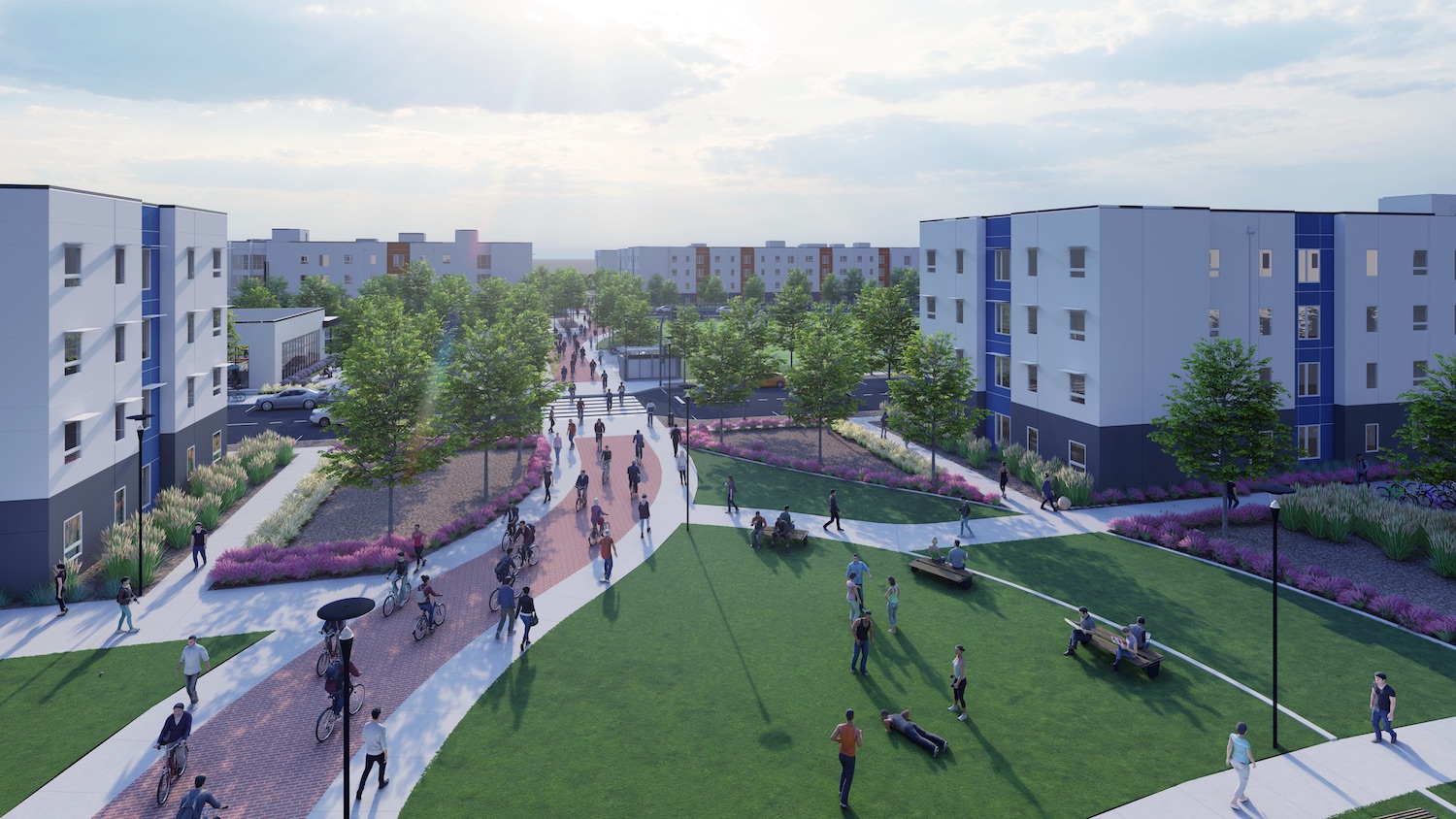
Under construction on the campus of the University of California at Davis is the nation’s largest public-private partnership for a student housing project in the U.S. Stantec, The Michaels Organization, and CGB Building Company are part of the team for this complex, which will have 1,875 student beds within nine four-story apartment buildings. Rendering: Stantec
Several AEC firms say their university clients are turning more aggressively to public-private partnerships (P3s) to finance future campus renovation and construction. One of Stantec’s higher ed jobs under construction is at the University of California–Davis: the nation’s largest P3 student housing project to date.
“If universities can’t keep up with demand, they can turn to the private sector for facilities to accommodate student housing and dining,” observes Brent Amos, Principal and Secretary-Treasurer for Cooper Carry. Arup’s McCafferty thinks there will be renewed interest in funding initiatives and investment streams associated with biological sciences and medical research.
The economic turmoil caused by the coronavirus will also thin the herd. Suffolk’s Edwards foresees some smaller institutions merging or being acquired by larger universities. Such consolidations could create opportunities for mixed-use developments that have synergies with universities, such as research labs or commercial space. Other private institutions that don’t choose the P3 or consolidation route might seek to monetize their land assets to generate capital for future construction.
Reassessing space needs in college buildings
The pandemic gave colleges and universities a pressing reason to reevaluate their assets, in order to figure out how they fit into longer-term sustainability plans. For example, about 30% of a typical campus footprint is currently used for administrative and faculty space, notes Patricia Bou, AIA, CannonDesign’s Co-Director–Education Market. Her colleague Charles Smith, AIA, believes that S+T and research facilities could gain importance as part of cross-disciplinary education. “The same goes for healthcare and medical education,” says Smith. “We’re thinking about how to address the intersection of health, science, and data.”
They also suggest that academic institutions should think about alternative uses for dining facilities and recreation centers if their on-campus populations are going to get smaller.
Priorities might change relative to building needs, with a shift in focus toward more adaptation of existing buildings or enhancement of building systems, say Summer Heck, Marketing and BD Manager-Education and S+T at Stantec’s office in Raleigh-Durham, N.C.; and Stephen Phillips, a Vice President at the firm’s Toronto office. “The pandemic will reinforce the rise of renovation and adaptive reuse projects, a trend we’ve been seeing in recent years,” concurs Cooper Carry’s Amos.
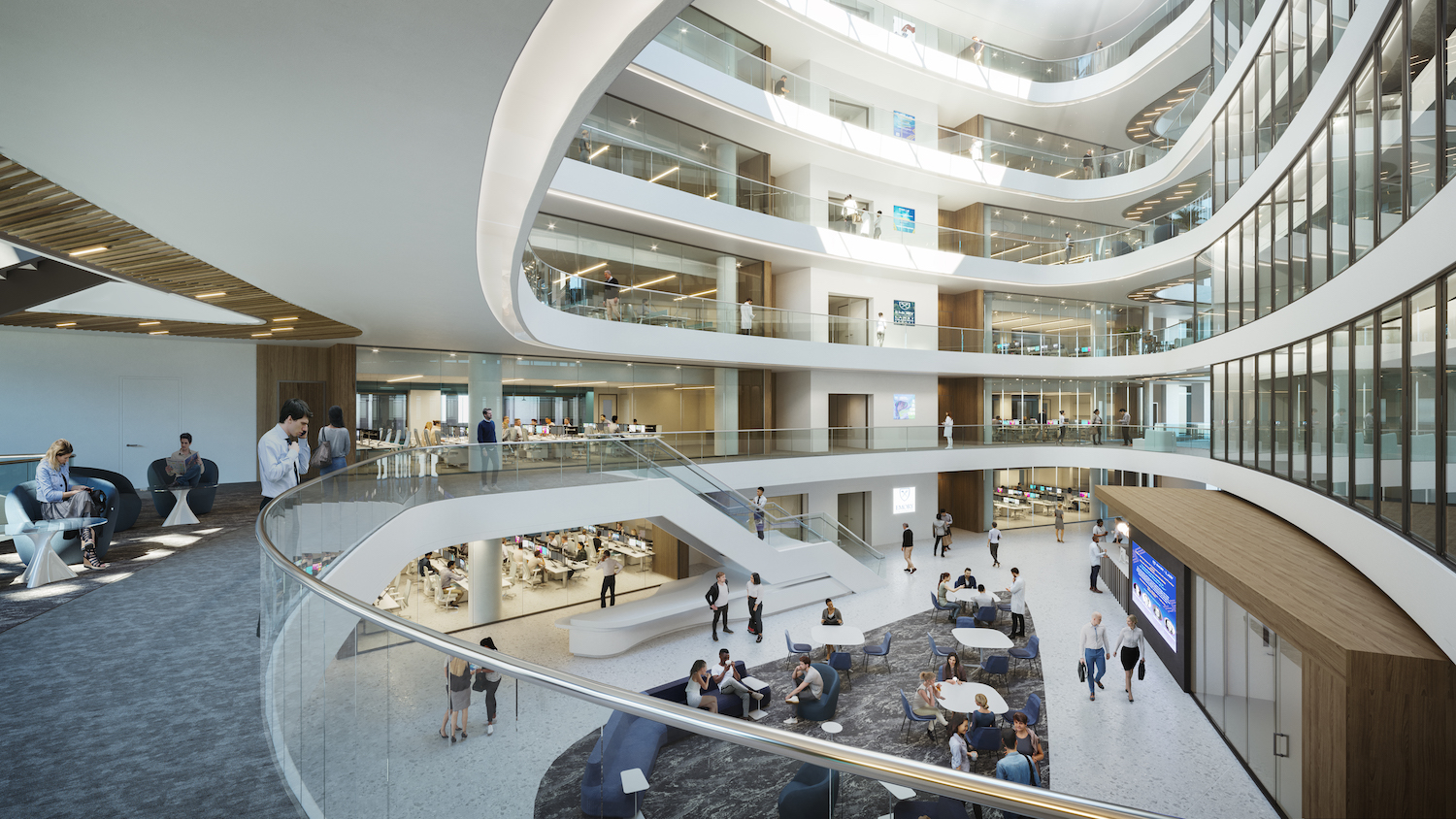
Emory University’s Health Research Science Building 2 is scheduled to open in Atlanta in 2022. HOK’s design supports Emory’s campus-wide sustainability efforts and aggressive goals for energy use reduction. Rendering: HOK
Stantec’s executives are seeing a continued focus on career and technical education and skills development. And innovation centers “are at the forefront on institutions’ minds,” they say.
Design professionals like HOK’s Sheppard are now being asked to consider academia’s long-term space strategies, and not just the short-term physical impacts of COVID-19. To that end, Sheppard sees HOK’s role evolving to help clients define how campus space supports their schools’ core missions, determine how much physical space is needed by typology, and assess the value of that space via post-occupancy evaluations.
Suffolk, says Edwards, has moved toward design-assist delivery and virtual design and construction tools to reinforce its expertise to university clients for space planning, building systems, operations, and maintenance.
SmithGroup’s Purdy says his firm is seeing “some exciting opportunities,” including major projects budgeted at $200 million or more, through the firm’s Scenario Mapping projects and CampusForward research. “We are going beyond sustainability and acute shocks, such as earthquakes and floods, to address future disease outbreaks and the chronic stresses of justice and equity.” The goal, he says, is to re-establish the “value” of the on-campus experience.
Related Stories
Multifamily Housing | Jan 23, 2023
Long Beach, Calif., office tower converted to market rate multifamily housing
A project to convert an underperforming mid-century office tower in Long Beach, Calif., created badly needed market rate housing with a significantly lowered carbon footprint. The adaptive reuse project, composed of 203,177 sf including parking, created 106 apartment units out of a Class B office building that had been vacant for about 10 years.
Hotel Facilities | Jan 23, 2023
U.S. hotel construction pipeline up 14% to close out 2022
At the end of 2022’s fourth quarter, the U.S. construction pipeline was up 14% by projects and 12% by rooms year-over-year, according to Lodging Econometrics.
AEC Tech | Jan 19, 2023
Data-informed design, with Josh Fritz of LEO A DALY
Joshua Fritz, Leo A Daly's first Data Scientist, discusses how information analysis can improve building project outcomes.
Multifamily Housing | Jan 19, 2023
Chicago multifamily high-rise inspired by industrial infrastructure and L tracks
The recently unveiled design of The Row Fulton Market, a new Chicago high-rise residential building, draws inspiration from industrial infrastructure and L tracks in the historic Fulton Market District neighborhood. The 43-story, 300-unit rental property is in the city’s former meatpacking district, and its glass-and-steel façade reflects the arched support beams of the L tracks.
Urban Planning | Jan 18, 2023
David Adjaye unveils master plan for Cleveland’s Cuyahoga Riverfront
Real estate developer Bedrock and the city of Cleveland recently unveiled a comprehensive Cuyahoga Riverfront master plan that will transform the riverfront. The 15-to-20-year vision will redevelop Tower City Center, and prioritize accessibility, equity, sustainability, and resilience.
Museums | Jan 18, 2023
Building memory: Why interpretive centers matter in an era of social change
The last few years have borne witness to some of the most rapid cultural shifts in our nation’s long history. If the experience has taught us anything, it is that we must find a way to keep our history in view, while also putting it in perspective.
ProConnect Events | Jan 17, 2023
3 ProConnect Single Family events for Home Builders and Product Manufacturers set for 2023
SGC Horizon, parent company of ProBuilder, will present 3 ProConnect Single Family Events this year. At ProConnect Single Family, Home Builders meet in confidential 20-minute sessions with Building Product Manufacturers to discuss upcoming projects, learn about new products, and discover practical solutions to technical problems.
University Buildings | Jan 17, 2023
Texas Christian University breaks ground on medical school for Dallas-Fort Worth region
Texas Christian University (TCU) has broken ground on the Anne Burnett Marion School of Medicine, which aims to help meet the expanding medical needs of the growing Dallas-Fort Worth region.
Green | Jan 17, 2023
Top 10 U.S. states for green building in 2022
The U.S. Green Building Council (USGBC) released its annual ranking of U.S. states leading the way on green building, with Massachusetts topping the list. The USGBC ranking is based on LEED-certified gross square footage per capita over the past year.
Libraries | Jan 13, 2023
One of the world’s largest new libraries opens in Shanghai
Designed by Schmidt Hammer Lassen Architects, Shanghai Library East covers more than 1.2 million sf, 80% of it dedicated to community activity.








